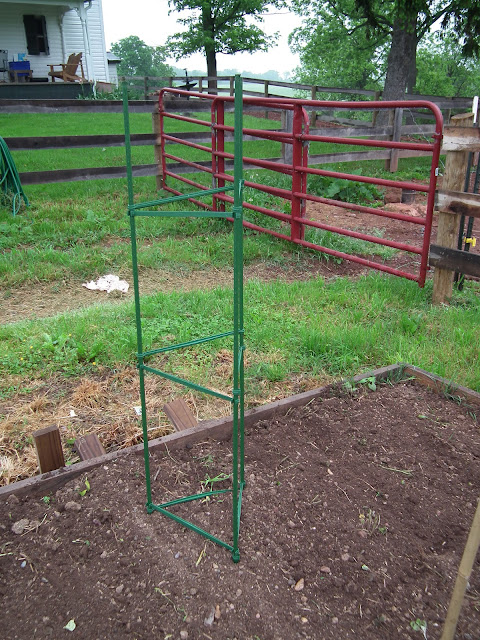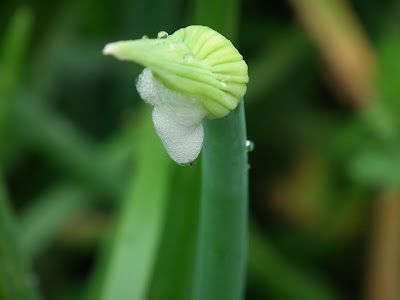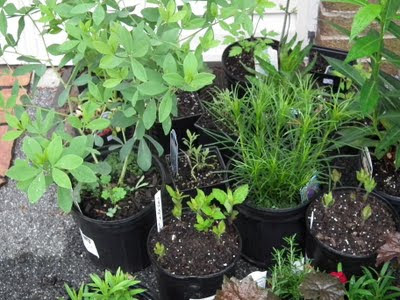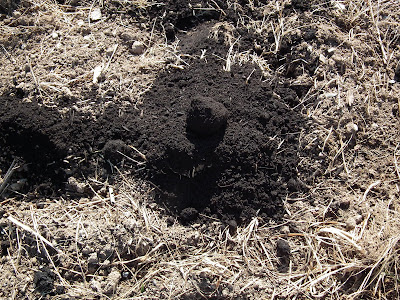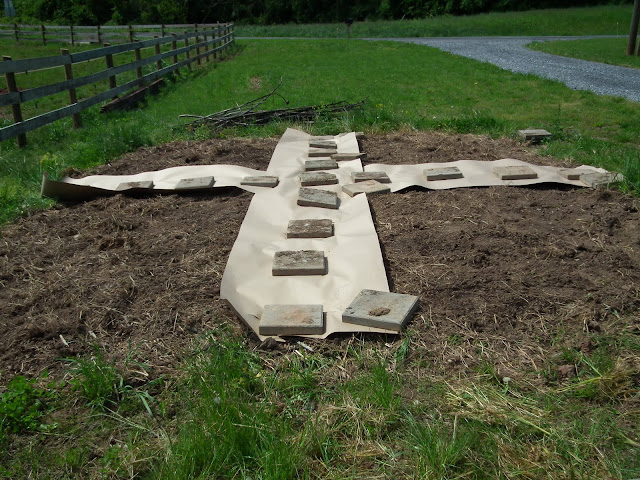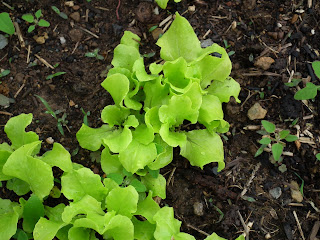Time to mulch! Actually had to water beds as the temp is high and getting higher everyday. Had a huge wind storm come through and drop some large branches into the tomato bed. Knocked over 2 of the bamboo supports, but the plants are fine.
I am going to head up early tomorrow or the next day to harvest lettuce, chard, strawberries, parsley and possibly peek under the soil to see what the potatoes are up to. Hoping for rain tonight.
Went into the barn and took a large wheelbarrow of loose straw and spread it around the tomatoes and potatoes. Mulching helps keep the soil from drying out. It also keeps the germination of weeds down. If there is no light hitting the soil, a lot of weed seeds will stay weed seeds. I use mulch that will decompose and actually help the soil in the future. Untreated grass clippings are excellent. They add nitrogen to the soil as they break down. Straw is my favorite because it is free for me and easy to get to and very light weight. The texture of the soil a year after it is laid down is beautiful - dark and crumbly.
Onions are ready to bloom.
I skipped last week's entry. I took an weekend trip with the husband to Virginia. Wanted to go to the beach but realized It may be senior week for some school districts. Did senior week once when I was 17, don't need to be there in that environment again. ever.
So, we went to Monticello, home of Thomas Jefferson. Beautiful. We skipped the house tour, saw it last year. The gardens are an inspiration. Of course they have a team of people to maintain the gardens now. In Jefferson's time, he had slaves to tend to the garden, but was known to spend a lot of time in the dirt ( when he was home.) The garden did provide a lot of food for the plantation, but also it was a huge science experiment. Jefferson kept detailed records of plantings and would plant several varieties of vegetables and flowers for testing purposes.
The native garden took a hit with the storm as well. Lost my phlox. Replaced it and added a little support for the next storm. The new phlox is "Miss Lingard." White with a nice fragrance. Saw it at Brookside Gardens in Montgomery County last year.
Coreopsis is blooming, attracting bugs.
Today, spent the day with family. What a blessing.
Had a hard winter, but we are starting to recover from a shocking loss.
 |
| everyone on the porch! |














